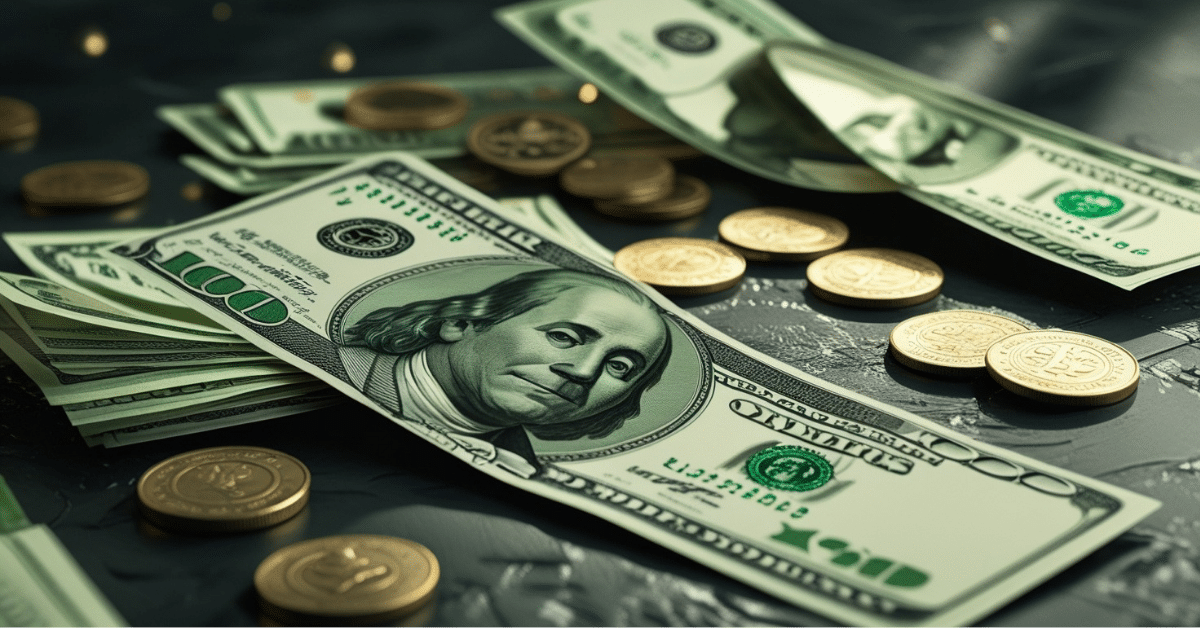The most dependable currency for cross-border transactions is the dollar. At one point, even America lacked its own currency and was reliant on the 25 paise.
The 17th century saw the introduction of Spanish silver dollars to America. The Bretton Woods Agreement in 1944 made the dollar the world’s most important currency. America ended the practice of exchanging money for gold in 1971.
Rise of Dollar power
Nearly every nation uses the US dollar. The dollar is regarded as the most dependable currency, particularly for transactions with other countries. However, have you ever pondered how the dollar earned its reputation as a world currency? How did people trade in the days before the dollar? What would happen if there were no dollar, which has become the most powerful currency in the world?
Without the dollar today, international trade may stop. However, even America was reliant on pennies at one point. The United States lacked its own currency. However, America became the world’s most powerful nation thanks to the dollar.
What was the currency’s predecessor?
The history of the dollar undoubtedly started when America gained its freedom, but Spain’s silver dollars were in circulation in America prior to that. In actuality, the British were occupying America in the 17th century, and they had little interest in giving money to nations that were still in slavery. In such a situation, the Spanish silver dollar became the de facto currency of America.
The European term “thaler” is where the word “dollar” originates. Throughout actuality, silver coins were known as thalers throughout Europe at the period. In the sixteenth century, the Czech Republic started making silver coins, called thalers. As this term gained popularity across Europe, the British began referring to it as “dollar” rather than “thaler.”
The Dollar’s arrival in America
America used to use silver coins for commerce. But since silver was scarce, the government started using paper money in 1690. In contrast, the dollar became the official currency of the United States in 1785 after the American Revolution, which led to independence. After becoming the country’s central bank in 1913, the Federal Reserve started issuing dollars in 1914.
In what way was the dollar sign “$” selected?
Over time, the dollar‘s symbol continued to evolve. “$” now stands for the dollar. The money was really known as “peso” in the Spanish American colony. The peso symbol is another name for the dollar sign because of this.
PS acted as Peso‘s representative. Over time, both were combined, and P began to appear above S. Following this, the peso symbol was defined by putting a line on the letter S ($).
Why was the dollar the world’s most powerful currency?
The history of the US dollar‘s rise to prominence as a world currency is likewise fascinating. This story begins with the Bretton Woods Agreement of 1944.
Following the outbreak of World War II, representatives from forty-four countries gathered at Bretton Woods in New Hampshire. America promised all of the nations that they would trade in dollars rather than gold at this time.
The dollar’s law of gold
America created a legislation that states that if someone brings money to the bank, they would get gold in return. In actuality, gold dealing presented significant difficulties for the merchants as well.
Transporting gold as money from one location to another was very challenging. Additionally, there was concern that gold might be stolen on route. All of the nations approved of America’s proposal in this case.
The majority of nations adopted dollars and began trading in them, while also depositing gold in American institutions. They were sure that they could pay dollars to the American bank at any time to withdraw their gold. Other nations began utilizing dollars extensively during this period as well.
The exchange rate is floating
However, in 1971, the United States repealed the gold-for-dollars law. Following this, the US implemented a variable exchange rate, the effects of which are still evident today. When compared to the currencies of other nations, the dollar’s value fluctuates daily.

